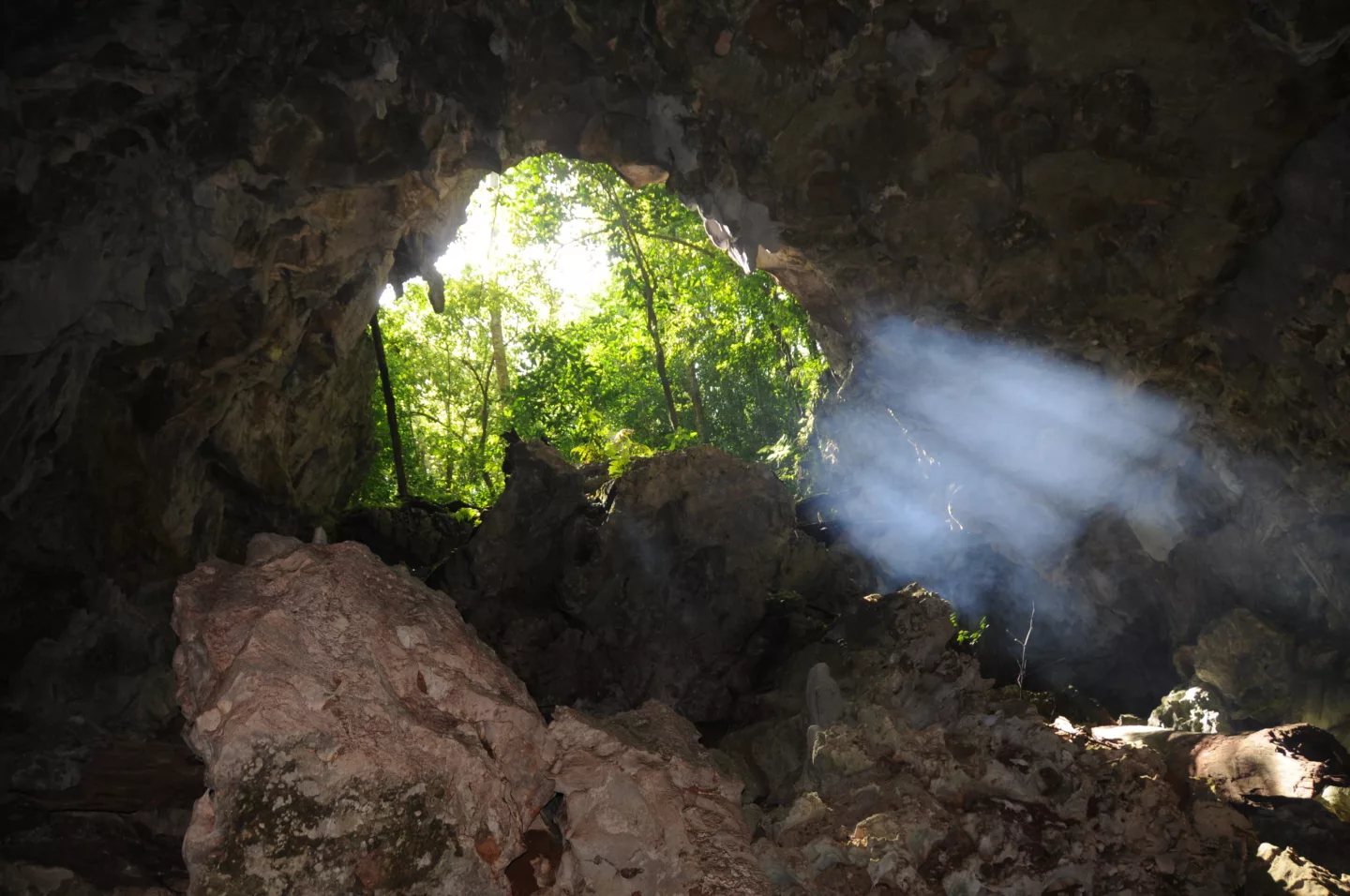For many years now, scientists have learned about the past by analyzing core samples taken from ice caps or soil. They have now applied that same technique to a millennia-old pile of bat poop, with interesting results.
The guano is question is located in Jamaica's Home Away from Home Cave. Five species of bats have simultaneously inhabited the cave over the past 4,300 years, continuously depositing successive layers of feces on its floor. The resulting pile now measures about 2 meters deep (6.6 ft), and is still mostly undisturbed.
Led by Dr. Jules Blais from Canada's University of Ottawa, an international team of researchers realized that by analyzing the chemical content of the different layers of guano, they could determine how the bats' diet has varied over the millennia. This information would in turn reflect changes in the environment throughout the time period.
With that in mind, the scientists proceeded to take a vertical core sample from the pile, ranging from the most recent guano on the surface right down to the oldest stuff on the bottom. The team utilized a technique similar to one that is commonly used to obtain mud core samples from lake beds.
In particular, the researchers were interested in compounds known as sterols. These are biochemical markers – which are distinctive to both plant and animal food sources – that pass from the food into the feces. The bat species present in the cave have fed on both fruit and insects, so both types of sterols were found, but in varying ratios.

Among other things, it was discovered that when the environment was unusually dry – such as during the Medieval and Minoan Warm Periods, approximately 1,000 and 3,000 years ago respectively – the bats fed mainly on fruit. This was very likely due to the fact that the scarcity of standing water reduced insect populations.
Additionally, increased carbon levels in the guano likely indicate the beginnings of sugar cane farming in Jamaica. Large quantities of carbon-heavy smoke are produced when the crops are burned prior to harvesting, in order to get rid of the plants' unwanted outer leaves.
"We inferred from our results that past climate has had an effect on the bats," says U Ottawa researcher Lauren Gallant. "Given the current changes in climate, we expect to see changes in how bats interact with the environment. That could have consequences for ecosystems."
A paper on the research was recently published in the Journal of Geophysical Research: Biogeosciences.
Source: American Geophysical Union






